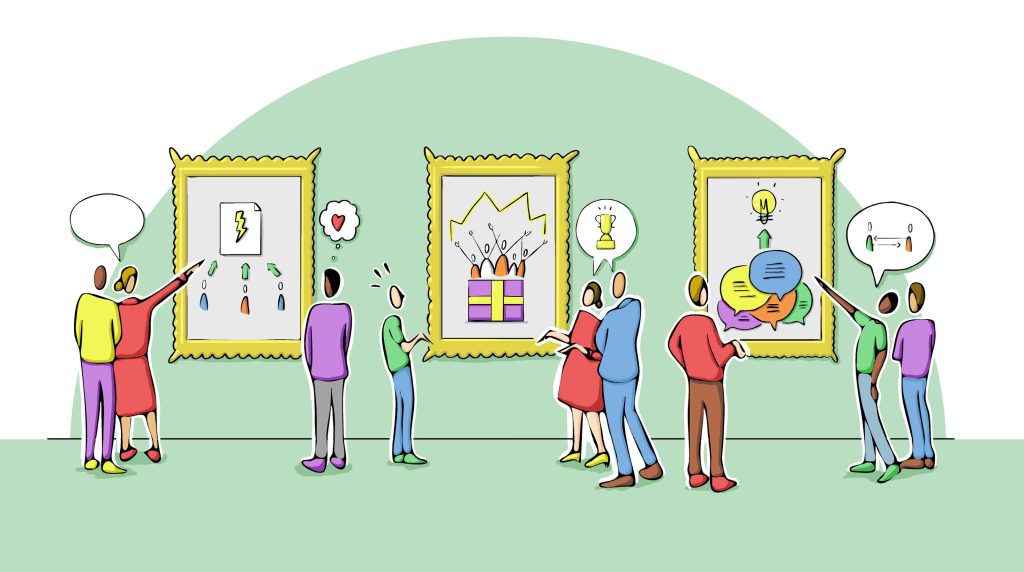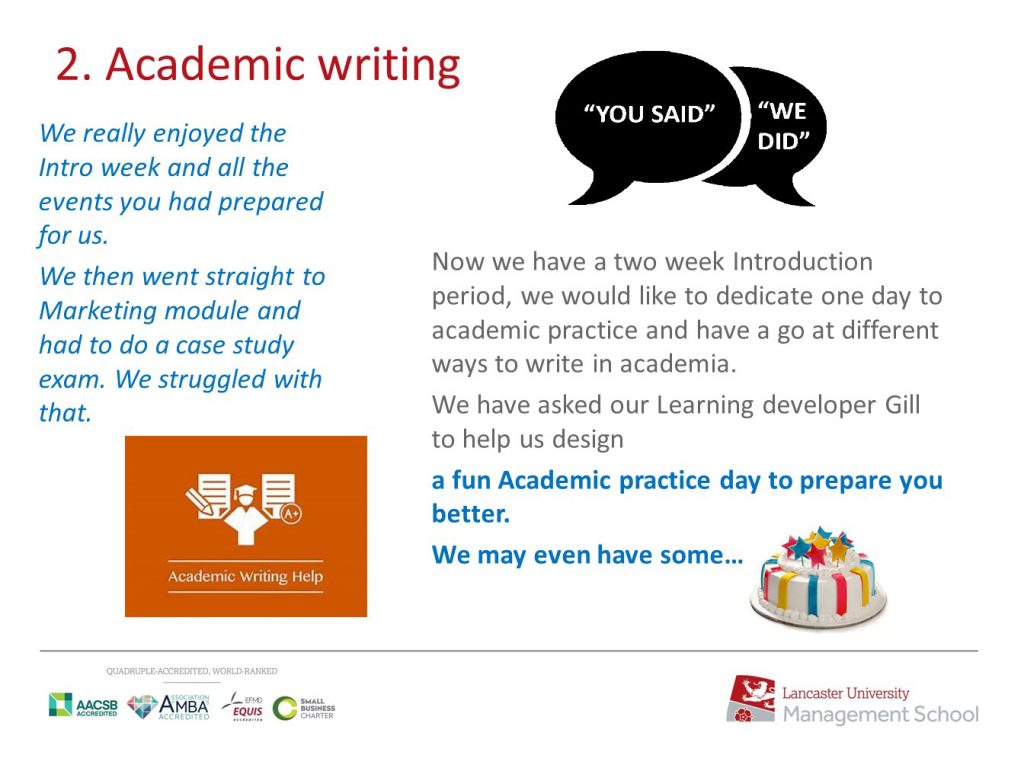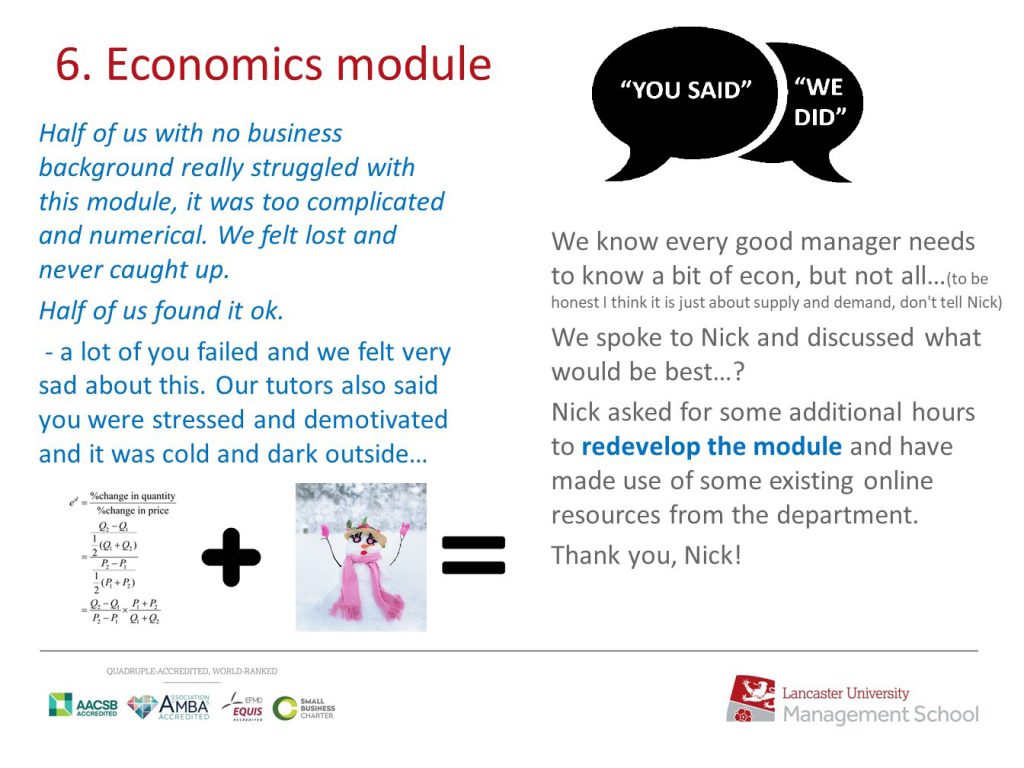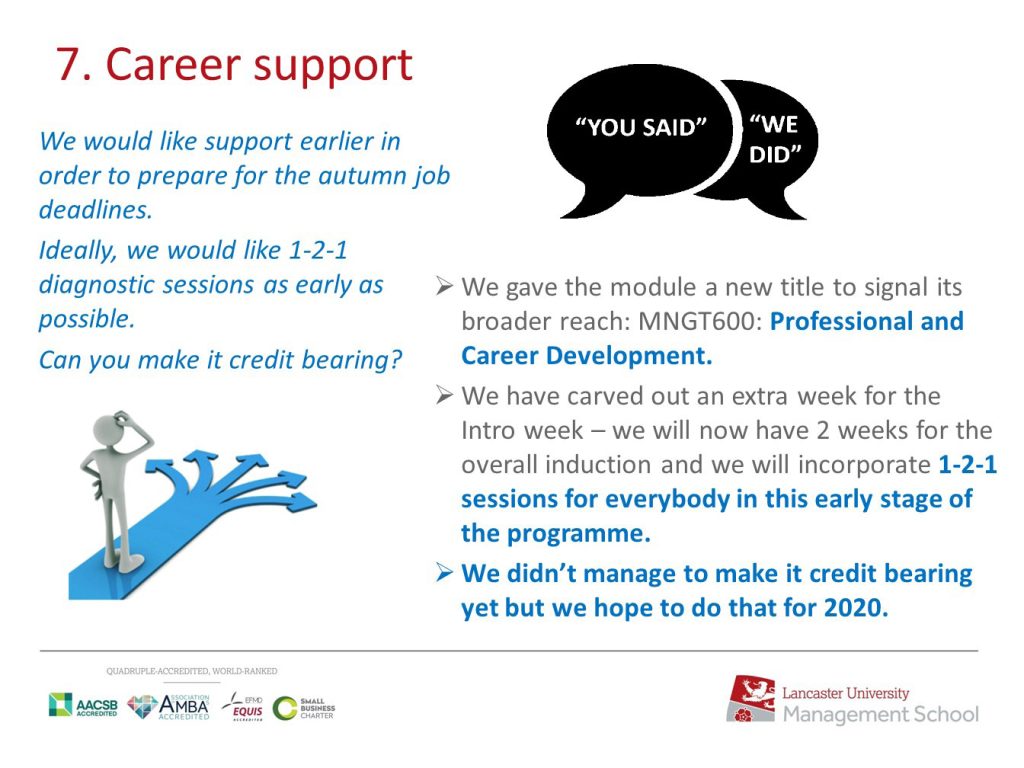
Sharing what you have achieved is as important as doing the review. This stage has a few substages that we will walk you through.
The first group to share the outcomes with is your programme team and wider group of colleagues who may be involved in implementing changes. It is good to discuss priorities for improvements and put together suggestions on how you may want to address these. You may also wish to go back to the students with a presentation of proposed changes to the programme and gain further feedback. Spend some time really thinking about the changes you want to make to ensure you will achieve the desired impact and think about how you will know the changes have worked.
For each change or improvement, go back to the root of the problem and remind yourself about how you know it is a problem. From that point, think about what is your desired future state and how the success will be measured. Have a bit of a play with this and if you can, do not rush this stage. Make sure you understand what resources you are committing to make the changes happen and get your programme team on board.
After the review, you will walk away with tons of information, possible solutions and great sense of satisfaction. You have opened up to hear the voices you have not heard before, you know your students much better now and as a true designer, your focus remains on how you might implement some of these improvements to address their needs.
It is useful to revisit your research wall and your evidence Safari insights and pull it all together with what you have learnt from the students. It is important to write it up into a more traditional report that you may have to submit to your quality assurance committee. Here are some tips:
Use evidence from the more traditional feedback and from the evidence Safari
Summarise the cohort profile and point out some key student characteristics
Highlight areas where students report positives about the programme
Highlight areas where students report negatives and
provide context
Propose a plan with priorities – focus on easy fixes as well as longer term issues
Based on your ecosystem knowledge, outline who will need to be consulted and involved to make the changes happen
Acknowledge areas that may not be possible to address
Summarise the proposed changes and improvements you are planning to implement and create a You Said, We Did PowerPoint slide deck (or something fancier if you like). Print out your You Said, We Did slides as posters and make a small exhibition out of it. Invite your students and programme team to celebrate your commitment to the programme. Invite the senior leadership team and make a thing out of this! You have loads to be proud of and such capstone event will close the loop and make your work visible.
Here are some examples for you:



Go public with the review outcomes! Get your students write a blog, post on social media, talk to your marketing team to help you promote your new approach to programme review. Get the alumni team onboard and let them know what you have achieved! Potential applicants, current students and alumni will really appreciate hearing about such thoughtful approach and commitment. You are sending a very powerful message – ”we care”! You have shown you are human and you care about the experience and quality of education you deliver on your programme.
We think you deserve another badge!
Here we go!
